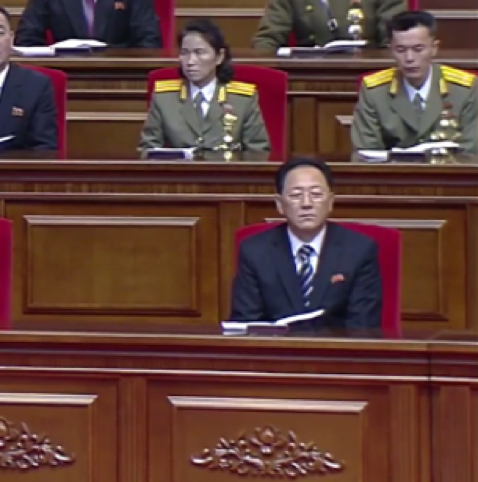38 North Special Report: Recent Changes in Kim Jong Un’s High Command
Prior to the Singapore Summit, the biggest news about the DPRK concerned a personnel shuffle of the Korean People’s Army (KPA) High Command.[1] Some of the coverage of these changes, obviously targeted on a general audience, was misleading. According to recent commentary, Kim Jong Un, the “brutal dictator,” had once again embarked on a bloody purge of senior officials.
A more coherent and accurate interpretation of Kim Jong Un’s rationale was that he switched his top military leaders as part of the preliminary phase of mothballing the DPRK’s WMD program; there is a certain logic to moving malcontents to other positions, lest they resist Kim’s moves on denuclearization. However, this was only a minor factor in Kim Jong Un’s calculations.
A better explanation of the recent adjustments in the KPA high command lies in understanding how senior personnel appointments are orchestrated and implemented in the party, army and state; looking at personnel appointments in relation to the institutions and personalities involved on a case-by-case basis; and recognizing the continuation of Kim Jong Un’s efforts to strengthen party and civilian control over North Korea’s armed forces.
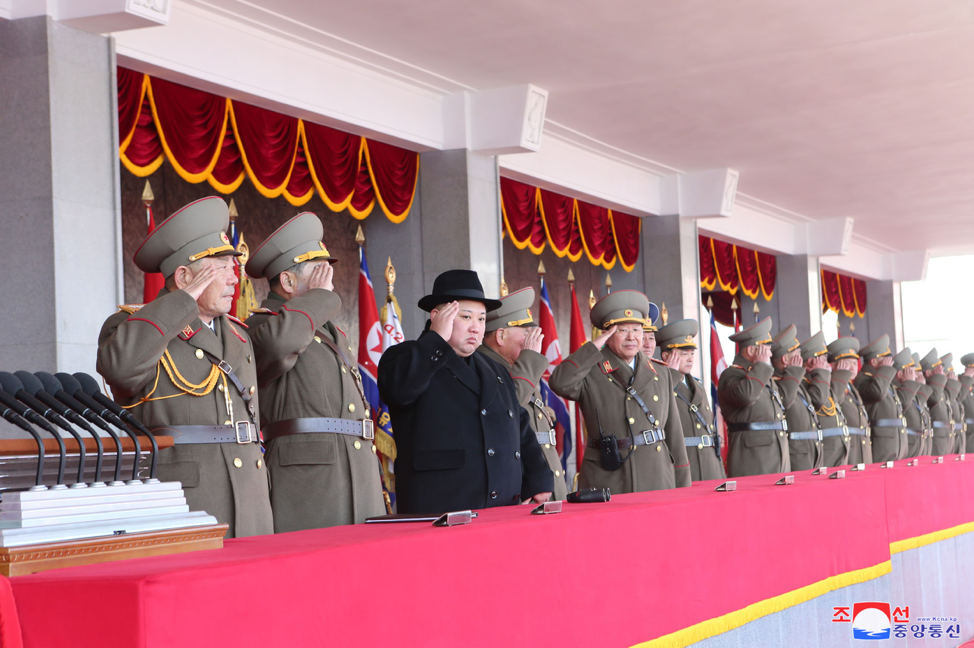
Characteristics of the Latest Personnel Shuffle
The changes in the KPA high command made in the past two months involve the heads of the three institutions which comprise a military and political command and control over the KPA’s conventional and special operations forces, as well as the rear service and administrative components which support them. These institutions include the Minister of the People’s Armed Forces (the DPRK’s equivalent of a defense minister), the Chief of the KPA General Staff Department (and by extension the 1st Vice Chief of the General Staff and Director of the Operations Bureau) and the director of the KPA General Political Bureau. These are the top three positions in the KPA high command. They come with automatic membership (either full or alternate) on the Workers’ Party of Korea (WPK) Political Bureau which places the incumbent officeholders in the “Top 20” of the DPRK’s formal political hierarchy.
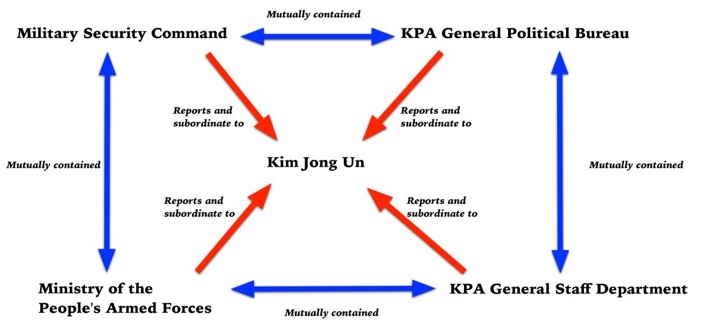
All three of the appointees are Kim Jong Un loyalists who have held high office since 2012. They will contribute to and implement his policies, including external overtures to China and the ROK as well as phased denuclearization, with little to no resistance. None has any long-standing patronage ties, and can be counted on not to feather their nests through malfeasance or misappropriation of resources. This is not to suggest that their predecessors were corrupt or disloyal; rather, the new appointments are an insurance policy based on their previous positions and contributions to the regime and their close links to Kim Jong Un and other members of the core leadership. In this respect, the Suryong (supreme leader) is leaving nothing to chance.
To be sure, these are highly significant personnel changes in the North’s political culture. Moreover, the fact that they were leaked and subsequently publicized at roughly the same time created a kind of shock factor. Two of the men who were replaced were observed saluting ROK President Moon Jae-in[2] during the April 27 high-level Inter-Korean Summit, and the adjustments were reported two weeks before the June 12 US-DPRK Singapore meeting, heightening the drama around the changes in the high command.
However, there is a significant gap between the time the Suryong and core leadership made these personnel appointments, when they were actually effected and when they were either leaked or reported in state media. It is highly probable the decision to replace the three officials was made several months ago, possibly at the beginning of the year. Unless there are particularly exigent circumstances, as was the case with the dismissal of Jang Song Thaek[3], at the earliest it takes between six to eight weeks to successfully implement these types of high-level changes. The average amount of time for such changes is about 12 weeks[4] and at maximum, the amount of the decision and transition period takes six months.
If the shorter time periods are considered, then this is a characteristic similar to other political systems, democratic and totalitarian alike. When the longer time periods are considered, the institutions in question go through periods of interim or transitional management to facilitate a smooth arrival for the new boss. In any event, these changes are not undertaken rashly; rather, they are deliberate and well-planned. This personnel management method—which is highly risk-averse—is one of the foundations of the DPRK political system’s resilience and survival. This lends itself in watching leadership activity in state media to occasionally seeing political dead men walking. Some conceal their alienation better than others.
The May 2018 personnel changes in the KPA high command have reminded Pyongyang watchers of the revolving door of defense ministers and General Staff chiefs that occurred between 2012 and 2015. Kim Jong Un has certainly cycled through more members of the KPA high command than in all of the 17-year official reign of his father Kim Jong Il. A few of those personnel changes occurred while the newly minted Suryong was consolidating his power. This involved a period of experimentation to find out what methods of control suited him, establishing his authority (hence, the late respected Gen. Kim Kyok Sik held two brief terms heading the Ministry of the People’s Armed Forces and the KPA General Staff Department), organizing and restructuring, rolling out new policies (i.e., WMD and ballistic missile development), reasserting the power of the KPA General Political Bureau and giving certain officials (such as former Minister of the People’s Armed Forces and current Corps Commander Jang Jong Nam) experience and seasoning before assigning them to other command positions.
Ironing out the kinks of DPRK civil-military relations, particularly with a new leader contending with an entrenched (and arguably complacent) political culture, is no easy task. Some casual Korea watchers can get trapped into thinking a vacancy in a first tier position represents a problem or disruption to the organization; but like other institutions and organizations throughout the world, there is a capable staff of deputies and senior managers who can maintain continuity until a new boss is selected.[5] Moreover, the revolving door was locked two years ago and the terms of office of members of the KPA high command stabilized.
It should also be noted that while significant, the recent personnel shake-up was not the biggest to affect the KPA high command. That occurred in February 2009, not long after Kim Jong Un was formally designated (internally) as Kim Jong Il’s hereditary successor (although the decision was not publicly announced until September 2010). At that time no less than seven[6] positions in the high and low first tier[7] of the KPA high command changed hands.
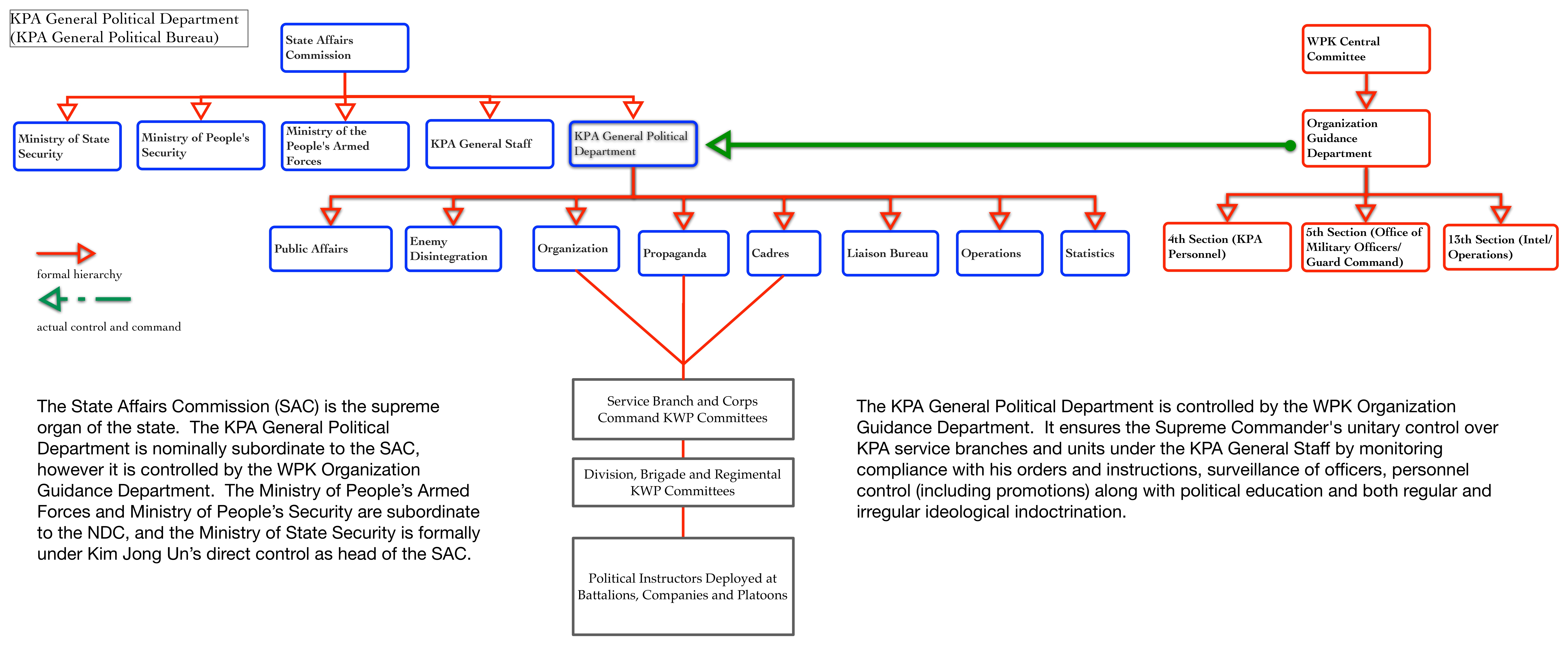
The KPA General Political Bureau
The KPA General Political Bureau (GPB) is responsible for the Party’s (WPK) political management of North Korea’s conventional and special operations forces. The GPB, through its network of political committees and political commissars, manages—among other things—political indoctrination and education, cultural activities, surveillance, and some aspects of personnel affairs of military units subordinate to the Ministry of the People’s Armed Forces and the KPA General Staff Department. Part of the GPB’s political control involves ensuring that the WPK’s military policies are implemented by the North’s armed forces.[8]
Kim Jong Un cut his political teeth back in 2007 working with the GPB.[9] He has used a number of former GPB alums as a personnel-feeder for top positions throughout the DPRK’s national security community, what Ken Gause calls the “GPB Mafia.” Many of these personnel appointments occurred while Kim Jong Un used a combination of the GPB’s political powers, field inspections, live-fire exercises and hardened commanders to establish discipline and his unitary command over the military. This largely occurred during the KPA High Command’s revolving door years of 2012-2015. With the GPB in the driver’s seat and Kim Jong Un focusing his energies on the Ministry of the People’s Armed Forces and the KPA General Staff Department, this most likely created an institutional arrogance among senior and mid-level GPB personnel. By late 2016 and early 2017, the GPB had become a cohort that, if left unchecked, could have emerged as an impediment to Kim Jong Un’s policy goals, a challenge to his political authority and, however remote the possibility, a threat to his personal safety.[10]
Influential GPB personnel, however, need not present the Supreme Commander with a direct power challenge to be a problem. Instead, the GPB’s Organizational Affairs Department can exert bureaucratic resistance to policy implementation. The network of its political committees, commissars and instructors could half-heartedly implement policies, refuse to use their political power to ensure policy compliance or slow down direct orders from The Center. Human resources or materiel allocation could be slowed or not happen altogether. Another factor, which became salient during the last half of 2017, is malfeasance and corruption. The GPB Organizational Affairs Department has several branch offices located in close proximity to military bases. While their primary mission is policy implementation, indoctrination, labor activities and so forth, each of these regional branch offices has a finance and accounting unit which issues production quotas, allocates resources, and uses financial audit powers over the KPA’s foreign currency and domestic production sites. These sites run the gamut from small consumer good factories to fisheries and agricultural units. Between the Ministry of the People’s Armed Forces and the KPA General Staff Department[11] there are between 36 to 50 trading corporations which are subject to the economic planning and financial audit controls of the Organization Affairs Department and its regional offices.
The GPB has undergone the most organizational upheaval during the last year. From July-November 2017, the GPB was subject to its first top-to-bottom investigation, inspection and audit by the WPK Organization Guidance Department (OGD) since 1996. Some accounts claim that senior GPB personnel were accepting bribes for military promotions. This is probably accurate[12], but only one of many things that would trigger such a comprehensive and capacious inquiry. Other matters of interest to the OGD investigators included the embarrassment of ghost fishing vessels—linked to KPA fishery production units turning up in Japanese waters—inefficiency in allocating service members, and materials for civilian infrastructure projects. One might find KPA trading companies and economic production compelled into financial misappropriation (skimming more from the top) as multilateral sanctions put pressure on KPA-owned companies to earn revenue. During the fall of 2017, several GPB political officers were executed and, considering the GPB’s financial and audit reach into the KPA all of these factors lie on the doorstep of the Organizational Affairs Department.
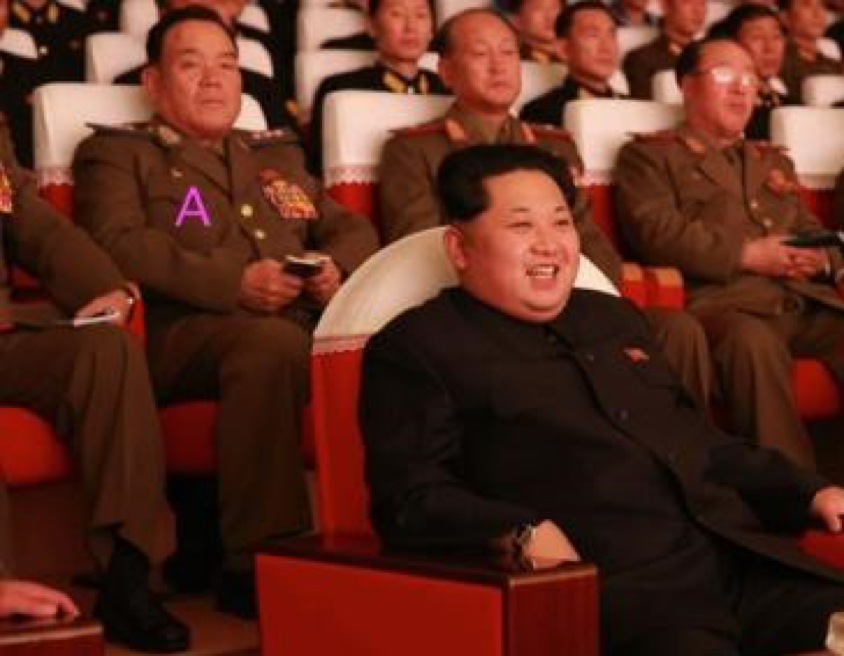
It is no accident that the first personnel change made at the top level of the GPB was to the head of the Organizational Affairs Department. In November 2017, Colonel-General Son Chol Ju was appointed as head of the Organization Affairs Department and his appointment was not widely publicized until May 2018. At the same time, the GPB’s then-director Vice Marshal Hwang Pyong So was removed from office. Hwang’s removal prompted speculative reports that he may have been incarcerated or undergoing political education through manual labor. When Hwang resurfaced in public over three months later in February 2018, he reappeared in his previous position as a WPK Central Committee Department Deputy Director (most likely in OGD). This means that if he was not quite the whistleblower on his GPB subordinates, then he accepted responsibility for lax management and the institutional defects in the GPB.
Vice Marshal Kim Jong Gak replaced Hwang Pyong So as head of GPB. Kim’s appointment was publicized on February 8, 2018, when he attended a military parade held to honor the KPA’s historical anniversary. A respected senior KPA commander, Kim is one of the few senior KPA officials who has held leadership positions across the entirety of the DPRK’s armed forces—he has been a corps deputy chief of staff and corps commander, headed a training facility, and was involved in military administration. As a prerequisite to lead the GPB, even on a temporary basis, Vice Marshal Kim served as Senior Deputy Director of the GPB, a specially created position with responsibility for the GPB’s daily operational management on behalf of the ailing former director, the late Vice Marshal Jo Myong Rok. When he was tapped to lead the GPB, Kim was serving as the founding rector and dean of the KIS Military University Post-Graduate School, a pet project of Kim Jong Un’s.
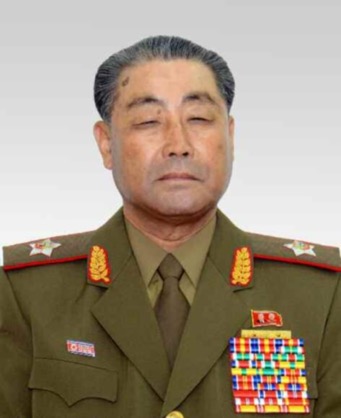
It is highly likely that Vice Marshal Kim was in office in late 2017. But by May 2018, despite being elected to the WPK Political Bureau and the State Affairs Commission, he had been replaced. There is a possibility that Kim anticipated a continuation of the GPB’s skim or, being in his late 70s, lacked the stamina to head the GPB. What is more likely, however, is that his term of office was always intended to be temporary. Given Vice Marshal Kim’s background, and the fact that Kim Jong Un had previously installed interim officials at the top of a number of organizations, Kim Jong Gak was appointed to lead the GPB on a transitional basis[13] until a more permanent replacement was appointed.
The new GPB Director is General Kim Su Gil. Prior to his appointment, from 2014 to 2018, General Kim was the Chairman of the Pyongyang WPK City Committee, the Party’s boss in the DPRK capital. Kim’s formative experience was serving as a political committee member and officer in the GPB. He was a member of an informal group of adjutants who attended a number of on-site visits and military field inspections early in Kim Jong Un’s leadership during 2012 to 2013.
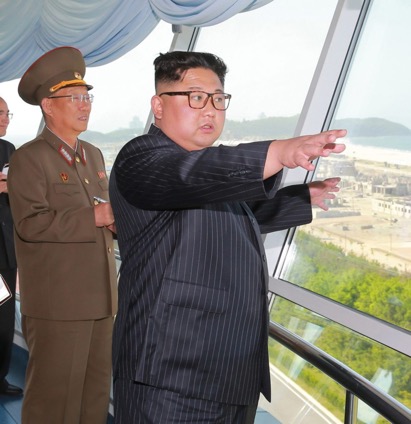
There are two things to note about Kim Su Gil’s elevation. First, for the last four years, he has been a civilian senior party official and is migrating back to serving as a uniformed military officer. Second, and more critically, when he was appointed as the party boss in Pyongyang, it occurred four months after the dismissal and execution of Jang Song Thaek. Among the institutions in Jang’s domain was the Pyongyang WPK City Committee.[14] One of Jang’s protégés[15] led the committee and the party apparatus included numerous members of Jang’s patronage network. With this appointment and the current GPB Director, Kim has taken over leadership of a major DPRK institution, at Kim Jong Un’s behest, after it had undergone a major investigation and some subordinate officials were subjected to incarceration, relocation or even execution.
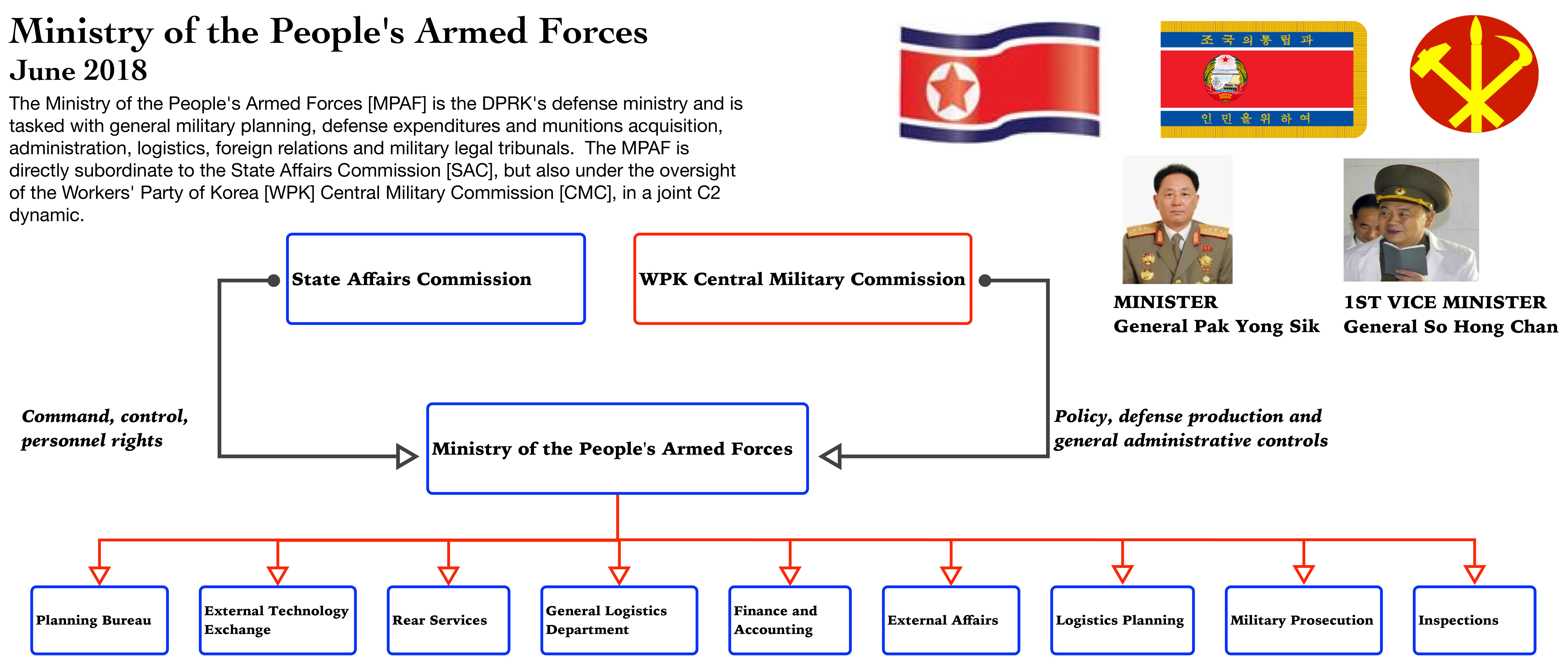
Ministry of the People’s Armed Forces
The Ministry of the People’s Armed Forces (MPAF) is the DPRK’s defense ministry. It is responsible for allocating material and human resources, administration, and diplomacy with foreign militaries and defense ministries. The MPAF also processes munitions and equipment orders for the North’s conventional armed forces. In addition, it contains the KPA General Logistical Department which is responsible for a number of rear service missions including food supply, medical care (including hospitals, clinics and KPA physicians and nurses), property management at KPA bases (the KPA is the largest landowner in the country), and the construction and maintenance of critical infrastructure on or in the vicinity of KPA bases.
To some Pyongyang watchers, the MPAF is merely a figurehead umbrella organization[16] for the GPB, the KPA General Staff Department, the Military Security Command (MSC) and other service and support organizations for the DPRK’s conventional and special operations forces. However, the MPAF gradually emerged as a functional defense ministry during the last years of Kim Jong Il’s life and has become a signature part of Kim Jong Un’s defense policies since he assumed power. One substantive change was formally subordinating the KPA General Logistical Department (GLD) to MPAF and making the 1st Vice Minister of the People’s Armed Forces concurrently the GLD’s Director, which started in 2012. Prior to that the GLD was technically subordinate to the MPAF, but tilted in the orbit of the GPB. And from 2014 to 2017, the KPA’s construction and non-combat engineering units—which were previously dispersed around the KPA General Staff, GPB and MPAF—were consolidated under the MPAF’s command and control.
Because of this organizational restructuring, and a sharpening of previously blurred lines of authority, the MPAF has been subject to the most personnel upheaval at the top. Under Kim Jong Un, six Ministers of the People’s Armed Forces have been appointed.[17] The last Minister was General Pak Yong Sik, who held the position for three years. General Pak was one of the two senior KPA commanders observed saluting ROK President Moon Jae-in on April 27.[18] As mentioned previously, he is a member of the “GPB Mafia” and has long-standing ties to the Kim Family, having previously served as the head of the Political Committee of the Pyongyang Defense Command (PDC), also known as the 91 Metropolitan Defense Corps.
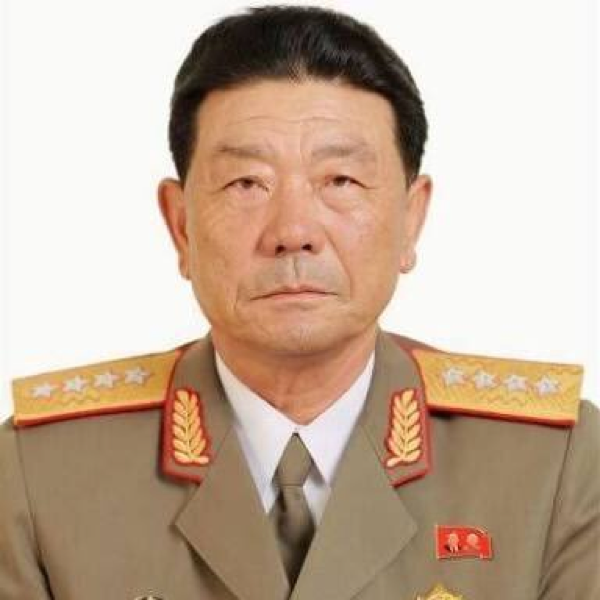
There are two ways to view Pak Yong Sik’s removal from office. First, when General Pak was a political manager of the PDC, there was a dispute between that corps unit and the Guard Command over the allocation of construction materials for indok (benevolent or humanitarian) and kangsong taeguk (strong and prosperous state) projects which both these Praetorian Guard units were rushing to complete for Kim Il Sung’s centenary in 2012. With the potential inflow of money, daily necessities and construction materials from South Korea and most likely China, and given a prior history of participating in a bureaucratic turf war, General Pak may have been removed from office or temporarily disappeared because the margin of error on this inter-Korea-go-round is very small.[19] Misappropriation of funds, and especially building materials, was a constant headache for The Center during the latter part of the Sunshine Policy years.[20]
Secondly, he may turn up in another position, even if he has been temporarily sidelined to thwart skimming or misappropriation. If one is picking a position where he is likely to resurface in the KPA, then he might turn up as a political director of one of the KPA’s four forward-deployed ground corps units (I, II, IV and V Army Corps). It is a standard procedure for general-grade officers to rotate between positions in KPA High Command organizations, such as MPAF, and Corps Command positions. This applies to military field commanders under the KPA General Staff Department, as well as GPB political officers. General Pak turning up in a Corps Command or as head of a Corps Political Committee would be neither unprecedented nor surprising. As a commander or political committee chief of a forward-deployed ground corps unit, General Pak would retain his stripes in the KPA High Command and would be a trusted figure ensuring that inter-Korea military agreements are being kept by the KPA.
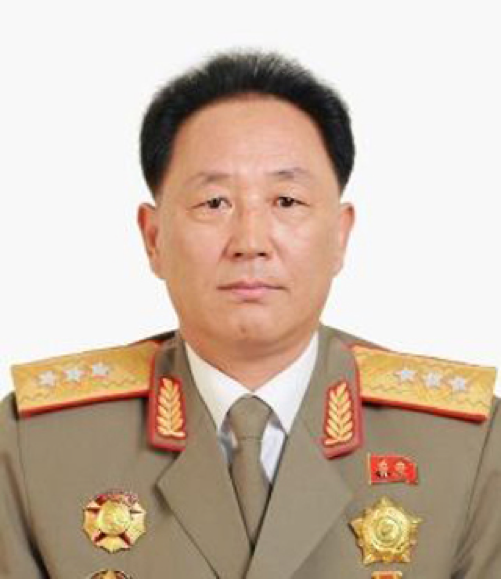
General No Kwang Chol was appointed to replace General Pak. No’s appointment was corroborated in DPRK state media coverage of Kim Jong Un’s visit to Singapore. For a little over two years, General No served as Chairman of the Second Economic Committee, which is the manufacturing and production arm of the DPRK’s conventional and strategic weapons. He has been an integral part of the country’s nuclear tests and ballistic missile drills, albeit less visible than other senior officials of the WPK Munitions Industry Department. Like Kim Su Gil at the head of the GPB, General No is a KPA general-grade officer who came to public prominence after Kim Jong Un’s accession. Also, like Kim, General No has rotated between serving as a uniformed officer and a civilian party official. No has also held positions as Vice Chief of the KPA General Staff and a brief term as the 1st Vice Minister of the People’s Armed Forces. This appointment can be viewed as both a reward for his loyalty to Kim Jong Un and his service as a trusted manager, but also as an effort to give him experience in a variety of top positions in the DPRK’s national security community before he ascends the top of the KPA High Command. Moreover, as Minister of the People’s Armed Forces, No will be the principal representative of North Korea’s armed forces with foreign civilian and military leadership. While accompanying Kim Jong Un to Singapore, No participated in interactions with Singapore’s Prime Minister and President Trump.
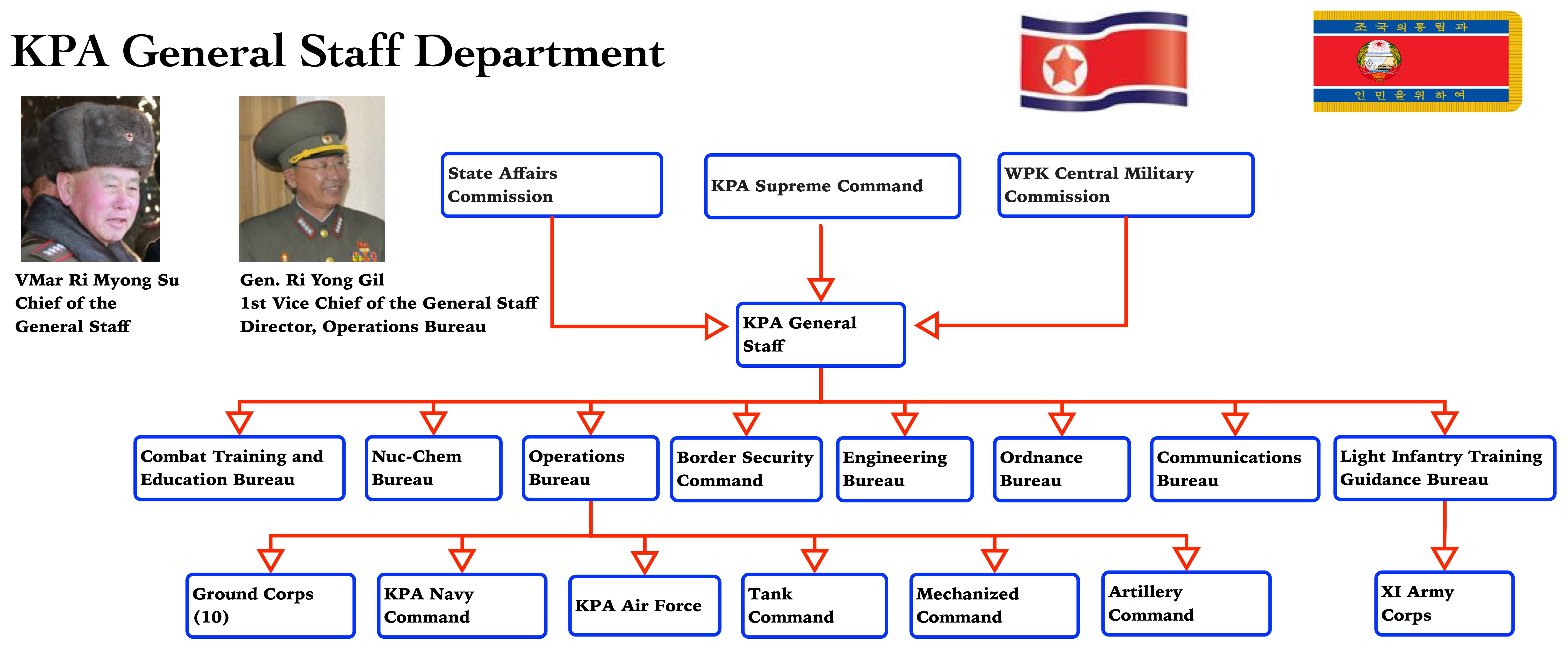
KPA General Staff Department
The KPA General Staff Department (GSD) is responsible for planning, operations, training and command and control of the KPA’s three conventional service branches (Ground, Navy and Air and Anti-Air Forces) and its special operations forces (SOF). In contrast to the GPB and the MPAF, the leadership of GSD has been stable for five years and it remains unclear if a personnel change at the top was attempted or completed.
According to several media reports and sources, General Ri Yong Gil has been appointed Chief of GSD. General Ri, however, has served at the top of GSD since 2013. Except for a three-month disappearance from public view in 2016, which prompted erroneous reports about his execution and arrest, General Ri has held only two positions since February 2013—either Chief of GSD (August 2013 to February 2016) or Director of the GSD Operations Bureau and 1st Chief of GSD (from February to August 2013, and then from May 2016 to May 2018).
The GSD Operations Bureau is responsible for the planning, training and daily command and control of the KPA’s three conventional service branches along with the training and movements of the PDC and III Army Corps which protect Pyongyang and its vicinity. The GSD Operations Bureau even contains a staff of adjutants and commanders that form the C4ISR link between the KPA Supreme Command and field commanders. The Chief of the GSD, in addition to having some supervision over the GSD Operations Bureau, also is responsible for the command and supervision of the GSD’s other bureaus (including combat engineering, the KPA Artillery Command, the training and education bureau and the GSD Communications Bureau). From one perspective, however, the distinction between the positions of the Chief of the GSD and the Director of the GSD Operations is without a difference.
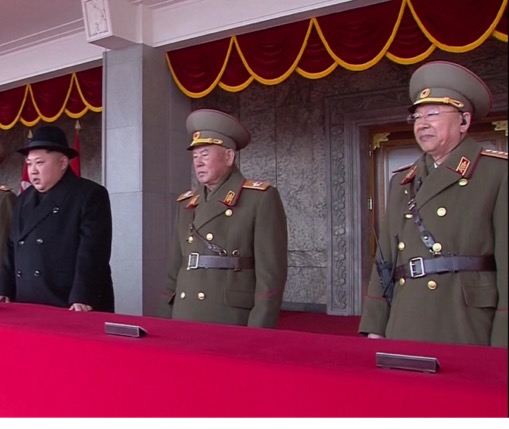
General Ri Yong Gil has reportedly replaced Vice Marshal Ri Myong Su, who was appointed Chief of the GSD in February 2016. From 1996 to 2007, Vice Marshal Ri Myong Su served as Director of the GSD Operations Bureau. This personnel shuffle remains unclear because Ri Myong Su has retained his membership on the WPK Political Bureau; he was also observed at both the departure and return ceremonies for Kim Jong Un’s visit to Singapore, and his name was mentioned in the state media.
Even if Vice Marshal Ri Myong Su has been removed as Chief of the GSD, Kim Jong Un will keep him around in some capacity. Ri accompanied the Suryong on field inspections of KPA units when he was still hereditary successor. He is also a positive influence and his presence and personality have a calming effect on Kim Jong Un. The most likely outcome, if Vice Marshal Ri has indeed moved on from GSD, is that he now works in the Personal Secretariat, possibly as a member of Operations Command Group or head of the Office of Military Officers.
Help Wanted
The elevations of General Kim Su Gil and General No Kwang Chol, as well as General Ri Yong Gil’s likely return as Chief of the KPA GSD, have caused three significant vacancies in the upper echelon of the DPRK’s political system. The Chair of the Pyongyang WPK City Committee, the Chair of the Second Economic Committee and the Director of the GSD Operations Bureau are not minor, interstitial positions in the regime.
The Pyongyang WPK City Committee Chairman’s position will most likely be the first replacement to be announced relatively soon in state media. The filling of the other two positions may take several weeks, possibly months before they are publicized or a reasonable estimation can be made as to who the new officeholders are.
- [1]
This paper derives from a notional outline and preliminary research for a foundational reference book focused on the KPA High Command by Ken Gause and Michael Madden.
- [2]
Some initial reporting and analysis about the KPA personnel shuffle tried to link Vice Marshal Ri Myong Su’s and Gen. Pak Yong Sik’s salute of President Moon as a major reason for their removal from office. Considering Gen. No Kwang Chol’s salute of President Donald J. Trump, this reporting and analysis has been rendered premature and is another reminder that North Korean leadership watching and analysis does not lend itself to the sanctimonious and short-sighted “hot takes” currently in vogue among certain media editors.
- [3]
Even in the case of Jang Song Thaek, he was under house arrest for nearly two months before the special call Political Bureau meeting at which he was dismissed from all of his party and government positions, and it took another two days before a special tribunal was convened resulting in his execution.
- [4]
Twelve weeks, or about three months, is the period of time during which senior officials undergo debriefing and indoctrination either at the Kim Il Sung University of Politics (for military commanders, officers and political commissars) or the Kim Il Sung Higher Party School (for party and government officials). While some DPRK elites are “sent down” as a punitive measure, it is a standard operating procedure (with a few exceptions) for mid-level to senior elites to undergo these training modules between positions.
- [5]
This paper shall disregard some Pyongyang watchers who feign expertise but appear to draw analytical conclusions before establishing a proper informational foundation, including a rigorous interrogation of their sources.
- [6]
At that time, a new Minister of the People’s Armed Forces, a new Chief of the KPA General Staff Department, a new 1st Vice Minister of the People’s Armed Forces, a new commanding officer of the Pyongyang Defense Command and a new commanding officer of the IV Army Corps were appointed. In addition to that then-Lieutenant-General Kim Yong Chol was appointed as head of the newly established Reconnaissance General Bureau and Gen. O Kuk Ryol was appointed a Vice Chairman of the National Defense Commission, the DPRK’s former supreme power organization.
- [7]
The KPA High Command and Corps Command is divided into five tiers. The first tier of the KPA high command can be further subdivided between “high” and “low” first tier. The high first tier consists of this paper’s primary topic: the Minister of the People’s Armed Forces, the Chief of the KPA General Staff Department and the Director of the KPA General Political Bureau. The low first tier overlaps between the KPA High Command and the KPA Corps Command and consists of: the 1st Vice Minister of the People’s Armed Forces, the Director of the KPA General Staff Department Operation Bureau (who is concurrently 1st Vice Chief of the KPA General Staff), the deputy director of the KPA General Political Bureau and head of its Organizational Affairs, the deputy director of the KPA General Political Bureau and head of Propaganda and Culture, the commanding officer of the Pyongyang Defense Command, the director of the Military Security Command and the commanding officers of the KPA Ground Forces’ four forward-deployed Corps (V, I, II and IV Army Corps).
- [8]
This creates a dynamic in which GPB political commissars and committee members can overrule military commanders who hold a superior rank. Thus, a captain subordinate to the GPB can overrule a major subordinate to the KPA General Staff Department.
- [9]
Kim Jong Un’s career formally began at an intersection between the WPK Organization Guidance Department (OGD) and the National Defense Commission, where he could be directly supervised by his father. During 2007 to 2009, Kim Jong Un established institutional ties to OGD, the GPB, the State Security Department (Ministry of State Security) and the Military Security Command.
- [10]
A direct challenge to Kim Jong Un’s personal safety, and that of other members of the core leadership, could certainly germinate within the GPB. The GPB has personnel numbers on their side with its political commissars and officers numbering between 200,000 to 300,000. There a number of ways, either directly or through deliberate neglect, that the GPB could slip through to Kim Jong Un’s outer security line and present him with violent and direct power challenges.
- [11]
This regulatory authority extends to the KPA General Logistical Department which is responsible for supplying food, clothing and healthcare to KPA units, as well as things like construction, property management and critical infrastructure maintenance.
- [12]
The GPB’s complete personnel authority only extends to noncommissioned officers. For KPA officers, the GPB’s authority is intentionally checked by the KPA Cadres’ Bureau. When promotions are under consideration, the GPB merely submits its personnel records to the Cadres’ Bureau which vets officers’ promotions. The Cadres’ Bureau then produces its own promotions list which is handed over to other KPA High Command components and the Organizations Guidance Department who haggle amongst themselves before submitting a promotions list to Kim Jong Un.
- [13]
When one looks at the “revolving door” years of the KPA High Command, one also needs to consider that interim and/or transitional management of DPRK institutions was an unexpected practice and characteristic of Kim Jong Un’s leadership. Another one was allowing senior officials to retire or migrate to more ceremonial positions. Both of these methods of managing personnel affairs were almost polar opposites of how Kim Jong Il did business (who could wait months before publicizing a personnel appointment and, as a matter of horse trading, had numerous lifetime appointments).
- [14]
Ironically, during the 1970s, Jang Song Thaek himself purged a number of Kim Jong Il’s political rivals from the Pyongyang WPK City Committee.
- [15]
This was Mun Kyong Dok, who trailed Jang through a number of his positions going back to the 1970s. Mun Kyong Dok hung on until April 2014 when he was replaced by Kim Su Gil.
- [16]
From the late 1980s on, the MPAF was largely an umbrella organization with the institution’s name serving as an external-use name for the KPA General Staff Department. The long-time Minister, Marshal O Jin U, also concurrently served as Director of the KPA General Political Bureau and at the time of his death in 1995 had largely outsourced his daily responsibilities to close aides. O’s concurrent positions were split between Vice Marshal Choe Kwang who became Minister and Vice Marshal Jo Myong Rok who became GPB Director. When Vice Marshal Choe passed away in 1997, his replacement and the functions of the MPAF were largely administrative and ceremonial, primarily channeling paperwork and weapons orders and conducting external relations and economic activity for the KPA.
- [17]
Here is where this paper will indicate that General Pak’s predecessor, General Hyong Yong Chol, was not in fact dismissed from office (let alone, sent to be shot) because he fell asleep at a meeting.
- [18]
General Pak was also observed talking gregariously with ROK government officials and introducing them to Vice Marshal Ri Myong Su. It needs to be underscored that when this was going on, General Pak knew he was at the end of his tenure.
- [19]
When Pak Yong Sik was on the PDC’s Political Committee, the PDC engaged in a resource turf war with the Guard Command. General Pak was not linked directly to these efforts, but that type of conflict would make Kim Jong Un wary.
- [20]
When the late Kim Yang Gon took over the WPK United Front Department around 2007, his first task was to investigate and penalize a number of DPRK officials leading inter-Korean cooperation entities who had embezzled funds or diverted supplies. This is one instance in DPRK history where numerous officials were executed. When North-South rapprochement was under scrutiny earlier this year (prior to the Olympics) some Pyongyang watchers noted that the DPRK did not have a deep bench of experienced inter-Korean officials. That is because many of them were corrupt and paid a penalty.

